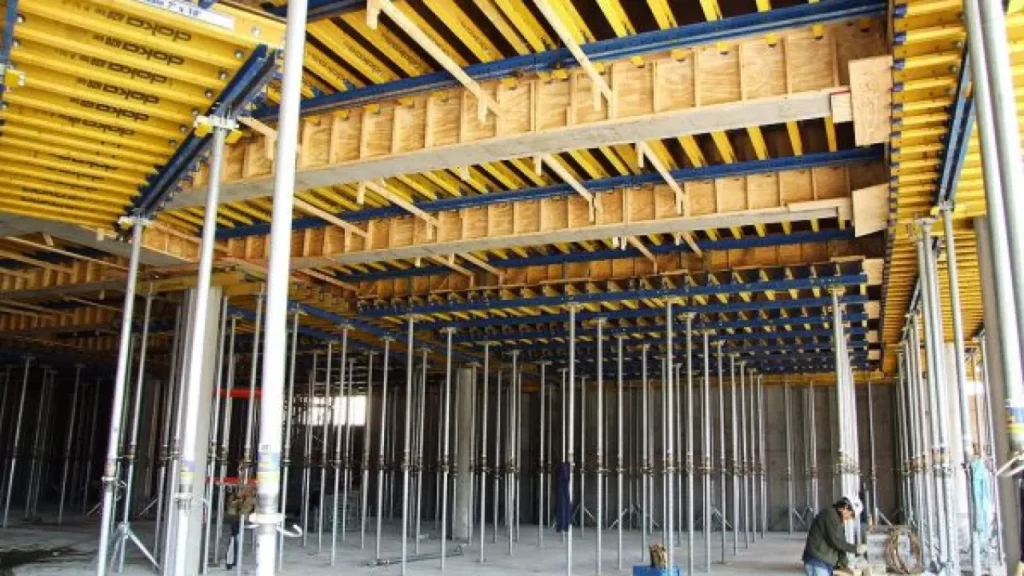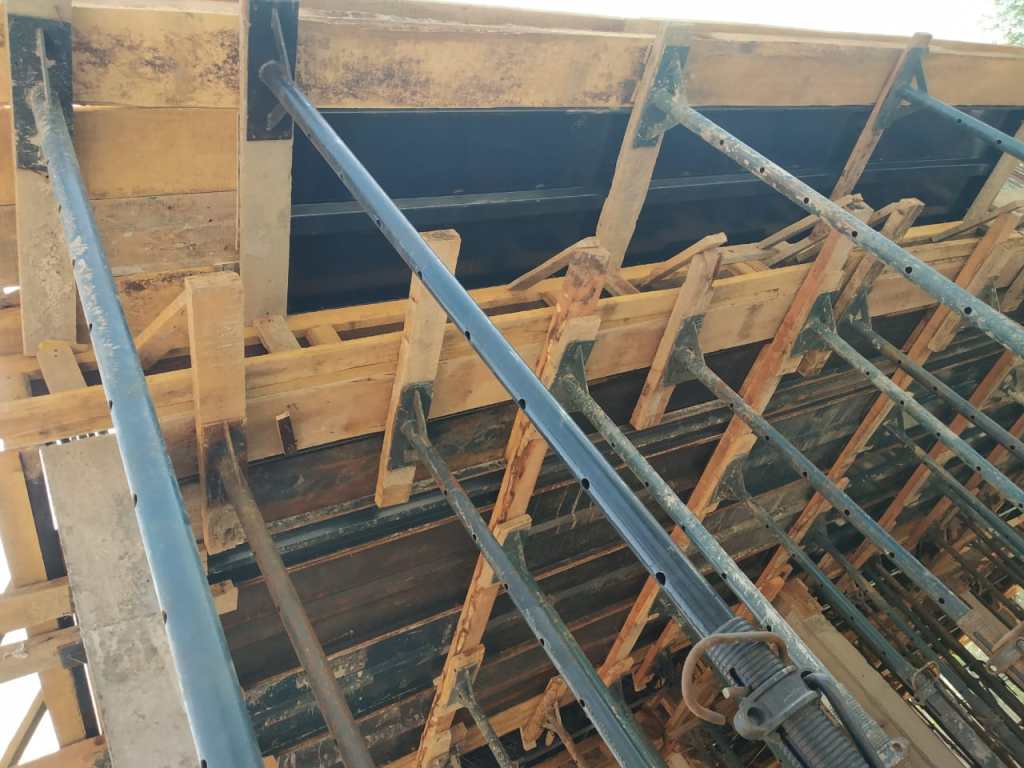Comparing Different Types of Formwork Plywood for Best Results
Formwork plywood plays a crucial role in the construction industry, especially in concrete formwork applications. It provides support, stability, and shape to the concrete structures during the construction process. However, selecting the right type of formwork plywood is essential to ensure the best results. In this article, we will explore the various types of formwork plywood available in the market and compare their features and benefits.
Understanding Formwork Plywood
Formwork plywood is a versatile material that is specifically designed for use in forming concrete structures. It is made by gluing together multiple layers of thin veneer sheets, with the grain of each layer perpendicular to the adjacent layers. This construction technique gives plywood formwork its strength and dimensional stability.
But did you know that the process of manufacturing formwork plywood involves more than just gluing layers of veneer together? Each layer of veneer goes through a meticulous selection process to ensure that only the highest quality sheets are used. These sheets are carefully inspected for any defects, such as knots or warping, that could compromise the integrity of the plywood. This attention to detail ensures that the final product is not only strong but also free from any imperfections that could affect its performance.
Definition and Uses of Formwork Plywood
Formwork plywood is primarily used in construction projects to create temporary molds or forms for pouring concrete. These forms provide the necessary support and shape to the concrete until it cures and hardens. Once the concrete is set, the forms are removed, leaving behind a solid and well-defined structure.
But did you know that formwork plywood is not limited to just creating simple structures? Its versatility allows it to be used in a wide range of applications. From walls and columns to beams and slabs, formwork plywood can handle it all. It can even be used to create intricate architectural designs, adding a touch of elegance to any construction project. Its adaptability makes it an indispensable material in the construction industry, enabling builders and architects to bring their creative visions to life.
See Also: The Real Terrazzo Tiles vs. the Terrazzo Look-Alike
Importance of Choosing the Right Formwork Plywood
The choice of formwork plywood can significantly impact the quality and durability of the concrete structure. Selecting the right type of plywood is crucial for achieving the best results in terms of strength, surface finish, and resistance to water and moisture.
However, the process of choosing the right formwork plywood goes beyond simply picking any plywood off the shelf. It involves careful consideration of several key factors, such as the type of concrete being used, the expected load-bearing capacity of the structure, and the environmental conditions the plywood will be exposed to. Taking these factors into account ensures that the selected plywood is compatible with the specific requirements of the project, minimizing the risk of issues such as formwork failure, surface defects, concrete leakage, and reduced structural integrity.
So, the next time you see a concrete structure taking shape, remember the crucial role that formwork plywood plays in its construction. From its meticulous manufacturing process to its versatility and importance in achieving optimal results, formwork plywood truly is an unsung hero in the world of construction.
Key Factors to Consider When Selecting Formwork Plywood
Durability and Strength
Durability and strength are critical factors to assess when choosing formwork plywood. The plywood should be able to withstand the pressure exerted by the wet concrete without deforming or delaminating. High-strength plywood will ensure the stability and integrity of the formwork throughout the concrete pouring process.

When it comes to durability, it’s important to consider the type of wood used in the plywood. Hardwood plywood, such as birch or oak, is known for its strength and resistance to wear and tear. Softwood plywood, on the other hand, may be more affordable but may not offer the same level of durability.
Additionally, the plywood should have excellent nail-holding capacity and resistance to impact, ensuring it can withstand the construction site’s demanding conditions. This is especially important during the formwork assembly and dismantling stages, where the plywood may be subjected to repeated hammering and pressure.
Surface Finish
The surface finish of the formwork plywood directly affects the concrete’s appearance and texture. Smooth plywood surfaces result in high-quality surface finishes, while rough or uneven surfaces can leave imprints and affect the overall aesthetics of the concrete structure.
Formwork plywood with a high-quality surface finish helps achieve a visually pleasing outcome and may reduce the need for excessive surface treatments or repairs. It’s worth noting that some manufacturers offer plywood with a special coating or film on the surface to further enhance its smoothness and prevent concrete from sticking to it.
Furthermore, the color of the plywood can also impact the concrete’s appearance. Light-colored plywood can help reflect light, resulting in a brighter and more vibrant concrete surface, while darker-colored plywood may absorb more light, resulting in a slightly different visual effect.
Resistance to Water and Moisture
Concrete is a porous material that absorbs and releases moisture over time. As a result, formwork plywood can be exposed to significant amounts of water and moisture during the concrete curing process.
Choosing plywood with good resistance to water and moisture is crucial to prevent warping, swelling, or delamination. Moisture-resistant plywood ensures the formwork remains stable and intact, even in challenging environmental conditions. Some plywood manufacturers offer specially treated or coated plywood that provides enhanced water resistance, making it suitable for use in humid or wet climates.
It’s also important to consider the edges of the plywood, as they are more susceptible to water penetration. Plywood with sealed edges or edge treatments can help minimize water absorption and maintain the plywood’s structural integrity.
Overview of Different Types of Formwork Plywood
Formwork plywood is an essential component in construction projects, providing the necessary support and structure for concrete pouring. There are various types of formwork plywood available, each with its own unique characteristics and advantages. In addition to softwood, hardwood, tropical, and composite plywood, there are also specialized types such as film-faced plywood and overlaid plywood, designed for specific construction requirements.
Softwood Plywood
Softwood plywood is a popular choice due to its cost-effectiveness and availability. It is made from coniferous trees such as pine, spruce, or fir. Softwood plywood offers decent strength and stability, making it suitable for most formwork applications. However, it may not have the same durability and surface finish as other types of plywood.
Hardwood Plywood
Hardwood plywood is made from hardwood species such as oak, birch, or maple. It provides superior strength, durability, and surface finish compared to softwood plywood. Hardwood plywood is an excellent option for demanding construction projects that require exceptional performance and aesthetics.
Tropical Plywood
Tropical plywood is manufactured from tropical hardwood species, known for their natural resistance to moisture, insects, and decay. This type of plywood offers enhanced durability and dimensional stability, making it suitable for formwork applications in humid or tropical environments.
Composite Plywood
Composite plywood is a combination of wood veneers and synthetic materials such as fiberglass or phenolic resins. This type of plywood offers exceptional strength, durability, and resistance to moisture. Composite plywood is suitable for heavy-duty formwork applications or projects that require high performance under challenging conditions.
When choosing the right formwork plywood for a construction project, it is essential to consider factors such as the required strength, durability, surface finish, and environmental conditions. Each type of plywood has its own advantages and limitations, so selecting the appropriate material is crucial to ensuring the success and efficiency of the construction process.

Pros and Cons of Each Type of Formwork Plywood
Advantages and Disadvantages of Softwood Plywood
Softwood plywood is widely available and cost-effective, making it a popular choice for many construction projects. It offers decent strength and stability, but it may lack the same durability and surface finish as other types of plywood.
Softwood plywood, derived from coniferous trees such as pine or fir, is known for its versatility and affordability. It is readily accessible in various thicknesses and sizes, making it suitable for a wide range of formwork applications. Additionally, softwood plywood is relatively lightweight, making it easier to handle and transport on construction sites.
Advantages and Disadvantages of Hardwood Plywood
Hardwood plywood provides superior strength, durability, and surface finish compared to softwood plywood. It is an excellent option for projects that require exceptional performance and aesthetics. However, hardwood plywood can be relatively more expensive and less readily available.
Hardwood plywood, sourced from deciduous trees like oak or maple, boasts impressive structural integrity and resistance to wear and tear. Its dense composition and interlocking grain patterns contribute to its exceptional strength, making it suitable for heavy-duty formwork applications. Furthermore, hardwood plywood offers a smooth and attractive surface finish, which can eliminate the need for additional finishing work.
Advantages and Disadvantages of Tropical Plywood
Tropical plywood offers enhanced durability, dimensional stability, and resistance to moisture, making it suitable for challenging environmental conditions. However, tropical plywood may be more expensive and less available in some regions.
Tropical plywood, also known as marine plywood, is specifically designed to withstand humid and wet conditions. It is manufactured from tropical hardwood species, such as teak or mahogany, which naturally possess high levels of moisture resistance. This type of plywood is ideal for formwork applications in coastal areas or regions with high humidity levels, where protection against water damage is crucial.
Advantages and Disadvantages of Composite Plywood
Composite plywood combines the strength and durability of wood veneers with the added benefits of synthetic materials. It offers exceptional performance, durability, and resistance to moisture. However, composite plywood can be relatively more expensive and may require specialized knowledge for installation and handling.
Composite plywood, also referred to as engineered plywood, is a technologically advanced form of plywood that incorporates various materials, such as resin, fibers, and adhesives. This combination enhances its structural integrity, making it highly resistant to warping, cracking, and moisture damage. Moreover, composite plywood offers consistent quality and dimensional stability, ensuring precise formwork construction.
When selecting the most suitable type of formwork plywood, it is crucial to consider the specific requirements of the construction project, such as budget, application, and environmental conditions. Consulting with professionals and suppliers can help make an informed decision and ensure the best results.
Ultimately, choosing the right formwork plywood will contribute to the overall success and quality of the construction project. By considering the factors mentioned, understanding the different types available, and weighing their pros and cons, construction professionals can make an educated choice for optimal results.

